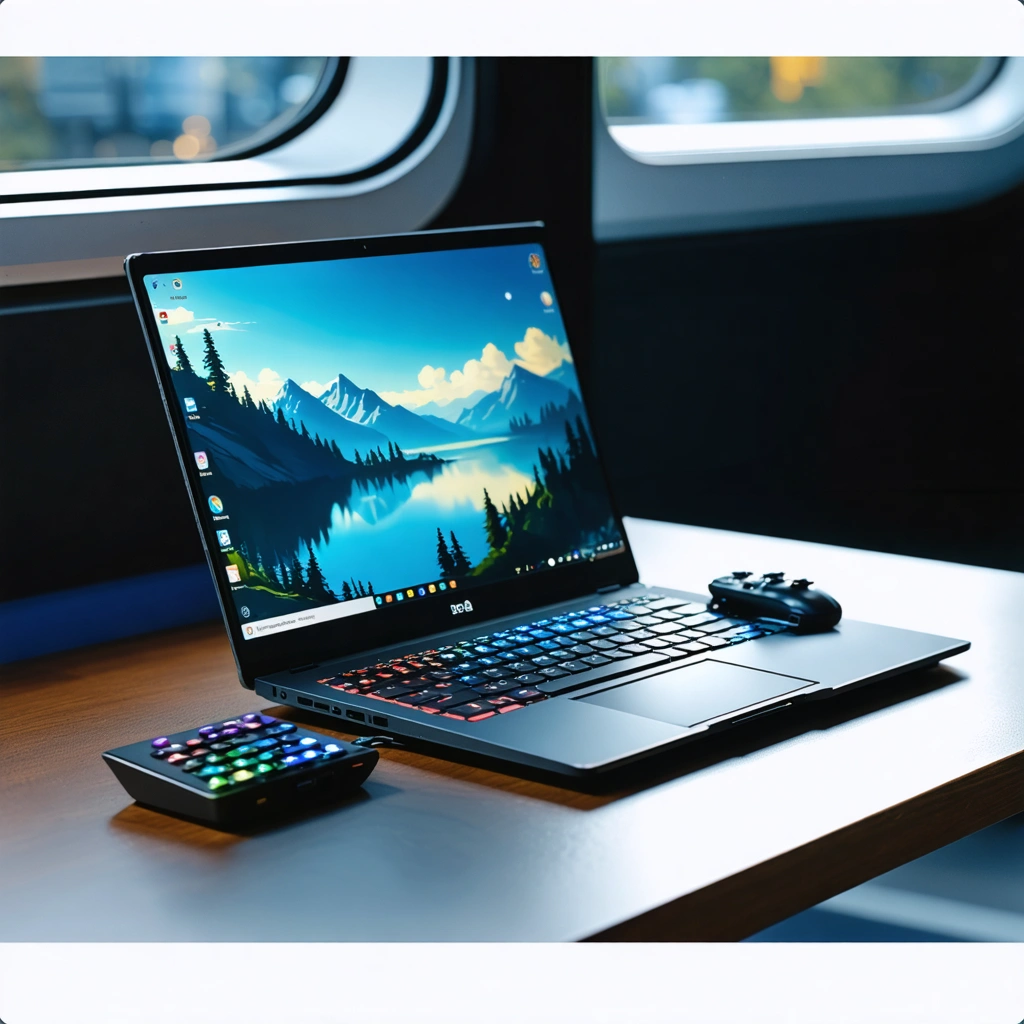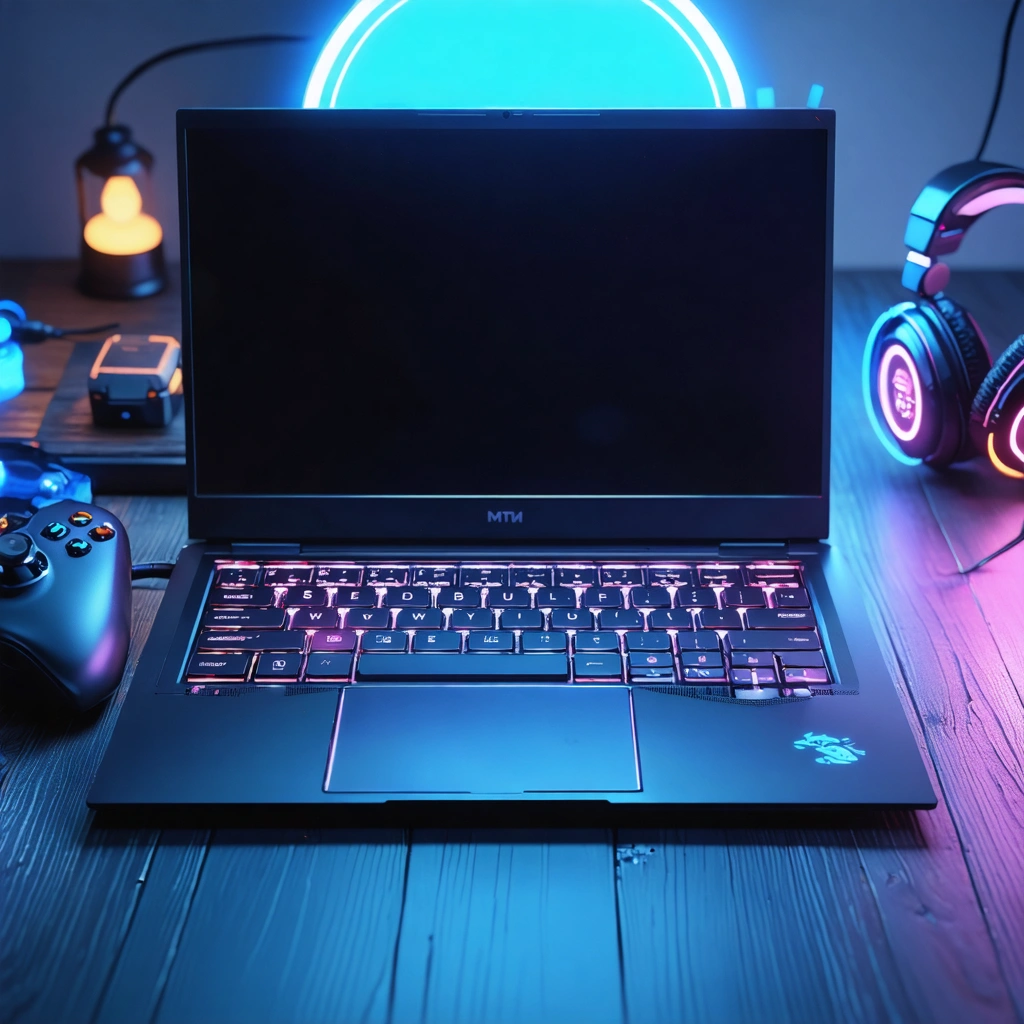
The Quest for Gaming Freedom: Why Size Matters
Imagine this: you’re gearing up for a weekend getaway, a quick trip to a friend’s place, or simply want to enjoy your favorite games without being chained to a bulky desktop setup. But the thought of sacrificing performance for portability is a hard pill to swallow. For gamers, this isn’t just a casual inconvenience — it’s a real challenge. Traditional high-performance gaming rigs tend to be enormous, heavy, and power-hungry beasts that are anything but travel-friendly. On the flip side, ultra-portable laptops often fall short when it comes to delivering the kind of raw power needed to enjoy the latest AAA titles with smooth frame rates and stunning graphics.
So, what’s the answer when you crave both power and portability? Enter the mini gaming laptop — a game-changer in the truest sense. These compact gaming PCs offer a compelling middle ground, designed to pack serious punch into a sleek, travel-friendly footprint. This isn’t just about smaller hardware; it’s about redefining what we expect from mobile gaming rigs.
Why Traditional Setups Just Don’t Cut It Anymore
If you’ve ever lugged around a bulky gaming laptop or tried to squeeze your desktop into a cramped space, you know the struggle all too well. Even compact laptops can feel like compromises when the graphics start to stutter or the fans roar louder than your game soundtrack. It’s frustrating when you want to dive into an intense gaming session but your gear simply can’t keep up.
And while a “mini PC under 2,000” sounds like a tempting price point, many models either skimp on essential specs or blow budgets with fancy but unnecessary bells and whistles. Finding a mini gaming PC that balances affordability, portability, and performance isn’t just a task — it’s a quest. Because gaming isn’t just a pastime; it’s a passion that demands serious hardware.
Here’s where the heart of the matter lies: you want a compact laptop that doesn’t just look good on your backpack shelf but delivers powerhouse performance that rivals larger desktops and high-end gaming laptops.
The Rise of Mini Gaming Laptops: Power Meets Portability
Thankfully, the tech world has answered the call. Mini gaming laptops have evolved rapidly, driven by advancements in CPU and GPU technology, smarter cooling systems, and innovative design philosophies. What used to be bulky and underpowered is now a sleek, lightweight, and capable machine you can comfortably carry in one hand.
These machines are more than just smaller versions of their bulky counterparts. They’re purpose-built compact gaming PCs that deliver high refresh rates, vivid displays, and impressive storage options — all while fitting easily into a backpack or even a large handbag. And the best part? Most options fall within the “mini PC under 2000” price bracket, making them accessible to a wide range of gamers.
- Portability without compromise: Imagine gaming anywhere — on a train, at a café, or even a park bench — with a mini gaming PC that weighs less than some textbooks.
- Powerful performance: Equipped with the latest processors and graphics cards, these compact laptops can handle everything from esports titles to immersive open-world games.
- Smart cooling solutions: Advanced thermal designs keep your machine cool and quiet even during marathon gaming sessions.
In the sections that follow, we’ll dive deeper into what makes these compact gaming PCs tick, explore the top models available today, and help you decide if a mini gaming laptop is the right fit for your gaming lifestyle.

Mini Gaming Laptops: Portable Power in Compact Designs
What is a Mini Gaming Laptop and How Does It Differ from a Traditional Gaming Laptop?
A mini gaming laptop is a portable, compact gaming device designed to deliver high performance in a smaller, travel-friendly form factor. Unlike traditional gaming laptops, which tend to be bulkier and heavier due to larger screens and more extensive cooling systems, mini gaming laptops prioritize portability without sacrificing core gaming capabilities.
These devices often feature screen sizes between 13 to 15 inches, optimized internal components, and efficient cooling solutions that allow gamers to enjoy modern titles on the go. The goal is to provide a balance between power and size, allowing users to carry a compact gaming PC experience anywhere.
What Are the Performance Expectations from Mini Gaming PCs?
Despite their size, mini gaming PCs and laptops are equipped with powerful hardware components such as the latest generation CPUs, dedicated GPUs, and fast SSD storage. For example, many mini gaming laptops under $2,000 can run AAA titles at 1080p with medium to high settings, which demonstrates significant power packed into a compact chassis.
Industry benchmarks show that compact laptops with NVIDIA RTX 30-series or AMD Radeon RX 6000-series GPUs deliver impressive frame rates in popular games like Cyberpunk 2077 and Call of Duty: Warzone, rivaling some larger laptops and desktop setups.
Why Should Gamers Consider a Mini PC Under 2,000 Dollars?
Choosing a mini PC under 2,000 dollars is an excellent way to access a high-performance gaming experience without the bulk and often higher price tag of larger gaming rigs. Mini gaming PCs and laptops under $2,000 typically offer:
- High-end processors (Intel i7/i9 or AMD Ryzen 7/9)
- Dedicated GPUs capable of ray tracing and high frame rates
- Fast NVMe SSDs for quick load times
- Portability and lightweight design for travel and LAN parties
- Efficient thermal management to maintain performance
This price point is a sweet spot for gamers who want a mini gaming PC that doesn’t compromise on speed or graphics but remains easy to transport.
How Do Mini Gaming PCs Compare to Traditional Desktop Gaming Setups?
Compact gaming PCs and mini gaming laptops offer the distinct advantage of portability, which traditional desktops cannot match. While desktops often provide superior cooling and upgradeability, mini PCs excel in space-saving and convenience, making them ideal for users with limited desk space or those who travel frequently.
Moreover, mini gaming PCs are increasingly powerful due to advancements in component miniaturization. For example, the Intel NUC 12 Enthusiast and other mini PCs pack desktop-class GPUs and CPUs into a chassis smaller than a shoebox, offering desktop-level performance in a fraction of the size.
What Are the Key Features to Look for in a Compact Laptop for Gaming?
When selecting a compact laptop optimized for gaming, consider the following features to ensure the device meets your performance and portability needs:
- Processor: Opt for the latest Intel Core i7/i9 or AMD Ryzen 7/9 for strong CPU performance.
- Graphics Card: Dedicated GPUs like NVIDIA RTX 3060 or higher provide excellent gaming graphics.
- Display: A high refresh rate (120Hz or more) and good color accuracy enhance gameplay experience.
- Thermal Design: Effective cooling prevents throttling during intense gaming sessions.
- Battery Life: While gaming drains battery quickly, look for laptops with decent endurance for non-gaming use.
- Build Quality: Durable materials and a sturdy chassis ensure longevity and portability.
Are Mini Gaming Laptops Suitable for Professional Use and Streaming?
Yes, many mini gaming laptops and compact gaming PCs are versatile enough to be used for professional tasks such as video editing, 3D rendering, and streaming. Thanks to powerful GPUs and CPUs, these devices can handle demanding workloads effectively.
For instance, streamers benefit from the portability of mini PCs under 2000 dollars, as they can set up their streaming stations anywhere. Additionally, many models support multiple displays and have robust connectivity options, making them suitable for content creation and live broadcasting.
How Does Portability Affect Gaming Performance in Mini PCs?
Portability in mini gaming laptops and PCs often requires balancing power and cooling. Smaller form factors limit airflow, which can impact sustained performance. However, manufacturers use advanced cooling technologies such as vapor chamber cooling, liquid metal thermal compounds, and efficient fan designs to mitigate these issues.
While mini gaming PCs might not always match the thermal headroom of full-sized desktops, they still provide excellent performance for most gaming scenarios. Users should be aware that extremely demanding games at ultra settings might push the limits of compact designs, but for the majority of popular games, mini gaming laptops are more than capable.
Real-Life Example: The ASUS ROG Flow X13
The ASUS ROG Flow X13 is a prime example of a mini gaming laptop that delivers powerful performance in a compact chassis. Weighing just 1.3 kg and featuring a 13.4-inch display, it combines an AMD Ryzen 9 processor with an NVIDIA RTX 3050 Ti GPU.
This laptop demonstrates how portability and power can coexist, offering gamers a device that fits easily into backpacks while still running modern games smoothly. It also supports an external GPU dock for users who want to boost performance at home, showcasing versatility rarely seen in traditional laptops.
Conclusion: Is Investing in a Mini Gaming Laptop Worth It?
For gamers and professionals who value portability along with performance, investing in a mini gaming laptop or compact gaming PC is a smart choice. These devices bring desktop-level power into travel-friendly sizes, making gaming accessible anywhere without heavy, bulky equipment.
By choosing a mini PC under 2,000 dollars, you gain access to high-end components, efficient cooling, and a compact laptop design tailored for versatile use. Whether you are a casual gamer, a streamer, or a creative professional, mini gaming laptops offer a compelling mix of convenience and capability in today’s fast-paced world.

